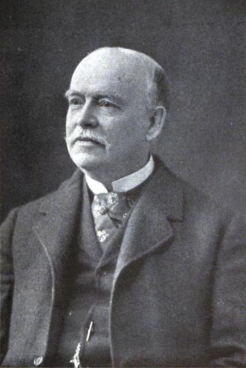
Josiah Cleaveland Cady was an American architect known for his Romanesque Revival designs. He was also a founder of the American Institute of Architects.
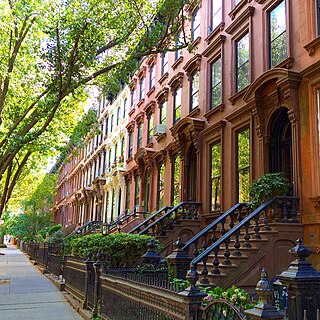
Park Slope is a neighborhood in western Brooklyn, New York City, within the area once known as South Brooklyn. Park Slope is roughly bounded by Prospect Park and Prospect Park West to the east, Fourth Avenue to the west, Flatbush Avenue to the north, and Prospect Expressway to the south. Generally, the neighborhood is divided into three sections from north to south: North Slope, Center Slope, and South Slope. The neighborhood takes its name from its location on the western slope of neighboring Prospect Park. Fifth Avenue and Seventh Avenue are its primary commercial streets, while its east–west side streets are lined with brownstones and apartment buildings.

Berkeley Springs State Park is situated in the center of Berkeley Springs, West Virginia, USA. The centerpiece of the Park is its historic mineral spa. These waters were celebrated for their medicinal or restorative powers and were generally taken internally for digestive disorders, or bathed in for stress relief. Native peoples visited these springs as did George Washington. Berkeley Springs is the only state-run spa in the United States and is operated by the West Virginia Division of Natural Resources.

The Center for Brooklyn History is a museum, library, and educational center founded in 1863 that preserves and encourages the study of Brooklyn's 400-year history. The center's Romanesque Revival building, located at Pierrepont and Clinton Streets in Brooklyn Heights, was designed by George B. Post and built in 1878–1881 by David H. King Jr., is a National Historic Landmark and part of New York City's Brooklyn Heights Historic District. The CBH houses materials relating to the history of Brooklyn and its people, and hosts exhibitions which draw over 9,000 members a year. In addition to general programming, the CBH serves over 70,000 public school students and teachers annually by providing exhibit tours, educational programs and curricula, and making its professional staff available for instruction and consultation.
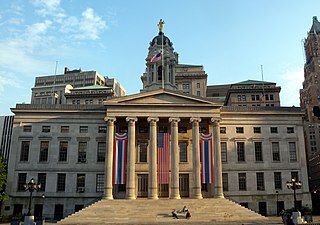
Brooklyn Borough Hall is a building in Downtown Brooklyn, New York City. It was designed by architects Calvin Pollard and Gamaliel King in the Greek Revival style, and constructed of Tuckahoe marble under the supervision of superintendent Stephen Haynes.

Jacob Riis Park, also called Jacob A. Riis Park and Riis Park, is a seaside park on the southwestern portion of the Rockaway Peninsula in the New York City borough of Queens. It lies at the foot of the Marine Parkway–Gil Hodges Memorial Bridge, east of Fort Tilden, and west of Neponsit and Rockaway Beach. Originally run by the New York City Department of Parks and Recreation, it later became part of the Jamaica Bay Unit of the Gateway National Recreation Area, and is managed by the National Park Service (NPS). It features an extensive sand beach along the Atlantic Ocean coastline and several historic Art Deco structures.

Bathhouse Row is a collection of bathhouses, associated buildings, and gardens located at Hot Springs National Park in the city of Hot Springs, Arkansas. The bathhouses were included in 1832 when the Federal Government took over four parcels of land to preserve 47 natural hot springs, their mineral waters which lack the sulphur odor of most hot springs, and their area of origin on the lower slopes of Hot Springs Mountain.
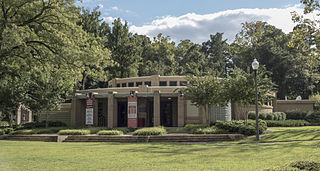
The Queen City Pool and Pool House, also known as the Queen City Pool, is a historic bathhouse and swimming pool located in Tuscaloosa, Alabama, United States. The bathhouse and pool were added to the National Register of Historic Places on September 9, 1992, due to their architectural and historical significance.
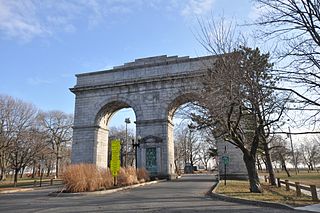
Seaside Park, located in Bridgeport, Connecticut, is a 2.5-mile (4.0 km) long crescent-shaped park bordering Bridgeport Harbor, Long Island Sound, and Black Rock Harbor. The park lies within Bridgeport's South End neighborhood.
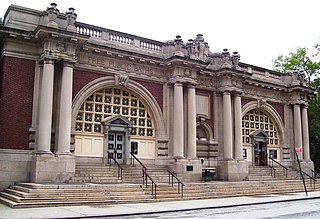
The Asser Levy Recreation Center is a recreational facility in the Kips Bay neighborhood of Manhattan in New York City, composed of the Asser Levy Public Baths and Asser Levy Playground. It is bounded by East 23rd Street to the south, East 25th Street to the north, and FDR Drive to the east. Along with the former Asser Levy Place to the west, it was named after Asser Levy, one of New York City's first Jewish citizens and a strong and influential advocate for civil liberties.

Public Bath House No. 3, also known as Yonkers Avenue Pool, is a historic public bath located on the border of the Getty Square and Nodine Hill neighborhoods in Southwest Yonkers, Westchester County, New York. It was built in 1909 and is a two-story, five bay wide red brick building with lively tile ornamentation in the Second Renaissance Revival style. It features a hipped tile parapet at the roofline that hides the flat roof. The interior is in three sections: reception area, custodian's apartment, and a pool and showers. It was remodeled in 1930 and 1958. It has been used for swimming classes.

Public School 108 is a historic school building located in Cypress Hills, Brooklyn, New York, New York. It was designed by James W. Naughton and built in 1895. It is a three-story, brick building trimmed in Lake Superior sandstone in the Romanesque Revival style. It has an attic fourth floor pierced by dormer windows. It consists of a seven bay central section connected to three bay wide end pavilions by recessed wings.

Public School 39, also known as PS 39 The Henry Bristow School, is a historic school building located in the Park Slope section of Brooklyn, New York City. It is a part of the New York City Department of Education.
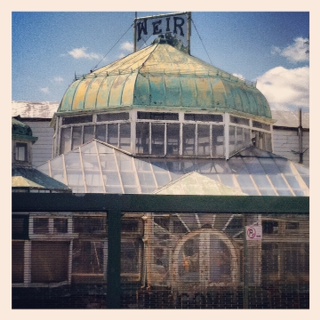
Weir Greenhouse is a historic greenhouse located across the street from the main entrance of Green-Wood Cemetery in Sunset Park, Brooklyn, New York City. It was designed by George Curtis Gillespie and built in 1895 by James Weir, Jr., a Brooklyn florist who had been in business for 50 years when he built the greenhouse for the business he operated with his son and grandson. It is a rectangular, wood frame and galvanized iron building with projecting bays and domes in the Victorian commercial style. The main entrance is set at an angle to the street corner and is octagonal in form. The rooftop features an octagonal cupola with a ball finial. Attached to the greenhouse is a one-story brick office structure.

The 14th Regiment Armory, also known as the Eighth Avenue Armory and the Park Slope Armory, is a historic National Guard armory building located on Eighth Avenue between 14th and 15th Streets in the South Slope neighborhood of Brooklyn, New York City, United States. The building is a brick and stone castle-like structure, and designed to be reminiscent of medieval military structures in Europe. It was built in 1891–95 and was designed in the Late Victorian style by William A. Mundell.
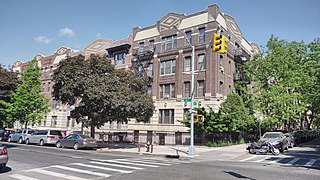
Park Slope Historic District is a national historic district in Park Slope, Brooklyn, New York, New York. It consists of 1,802 contributing buildings built between 1862 and about 1920. The 40-block district is almost exclusively residential and located adjacent to Prospect Park. It includes a variety of two and three story townhouses built in a variety of popular architectural styles of the late-19th and early 20th centuries. It was listed on the National Register of Historic Places in 1980.

The Hamilton Grange Branch of the New York Public Library is a historic library building located in Hamilton Heights, Manhattan, New York City. It was designed by McKim, Mead & White and built in 1905–1906. The branch was one of 65 built by the New York Public Library with funds provided by the philanthropist Andrew Carnegie, 11 of them designed by McKim, Mead & White. It is a three-story-high, five-bay-wide building faced in deeply rusticated gray limestone in an Italian Renaissance style. The building features round arched openings on the first floor and bronze lamps and grilles.
This is a timeline and chronology of the history of Brooklyn, New York. Brooklyn is the most populous of New York City's boroughs, and was settled in 1646.

Dubuque City Hall is located in Dubuque, Iowa, United States. The building was designed by J.N. Moody after Faneuil Hall in Boston and the Fulton Street Market in New York City. Dubuque architect John F. Rague served as the supervising architect during construction. Following a Medieval tradition, the city market was located on the first floor, municipal offices were located on the second floor, and a ballroom for civic events was located on the third floor.

The Gina Smith Campbell Bathhouse, also known as the Dell Rapids City Park Bathhouse, is a historic building in Dell Rapids City Park in Dell Rapids, South Dakota. It sits on the banks of the Big Sioux River and served a popular bathing beach in the early 19th century. In 1986, it was listed on the National Register of Historic Places.
























